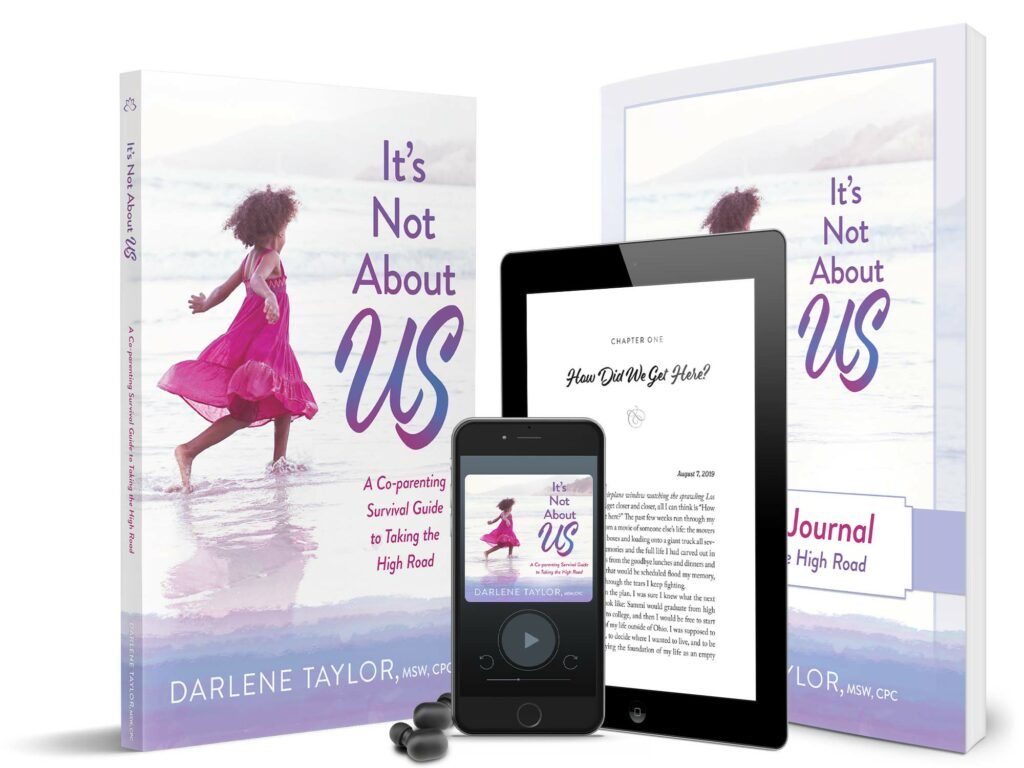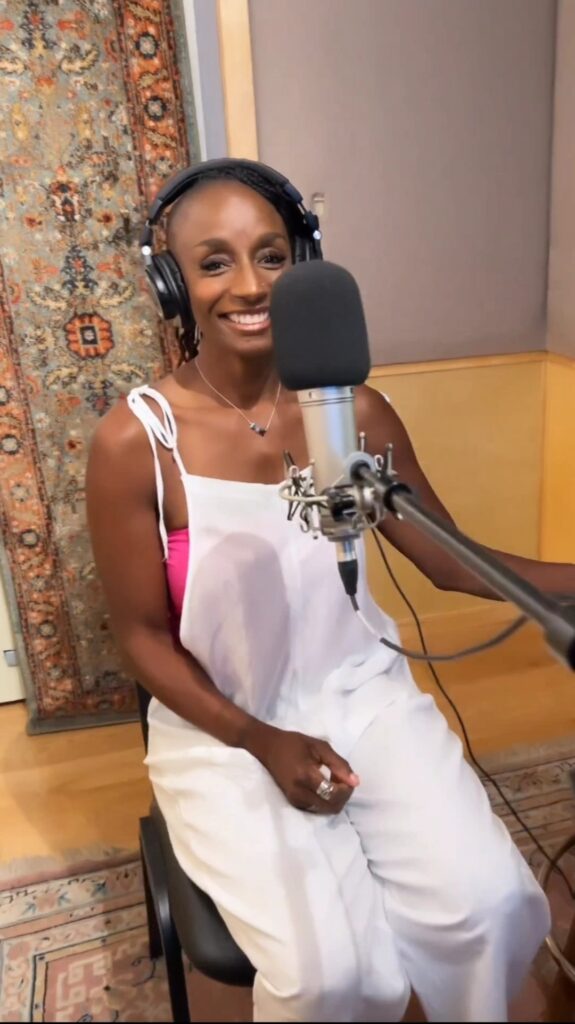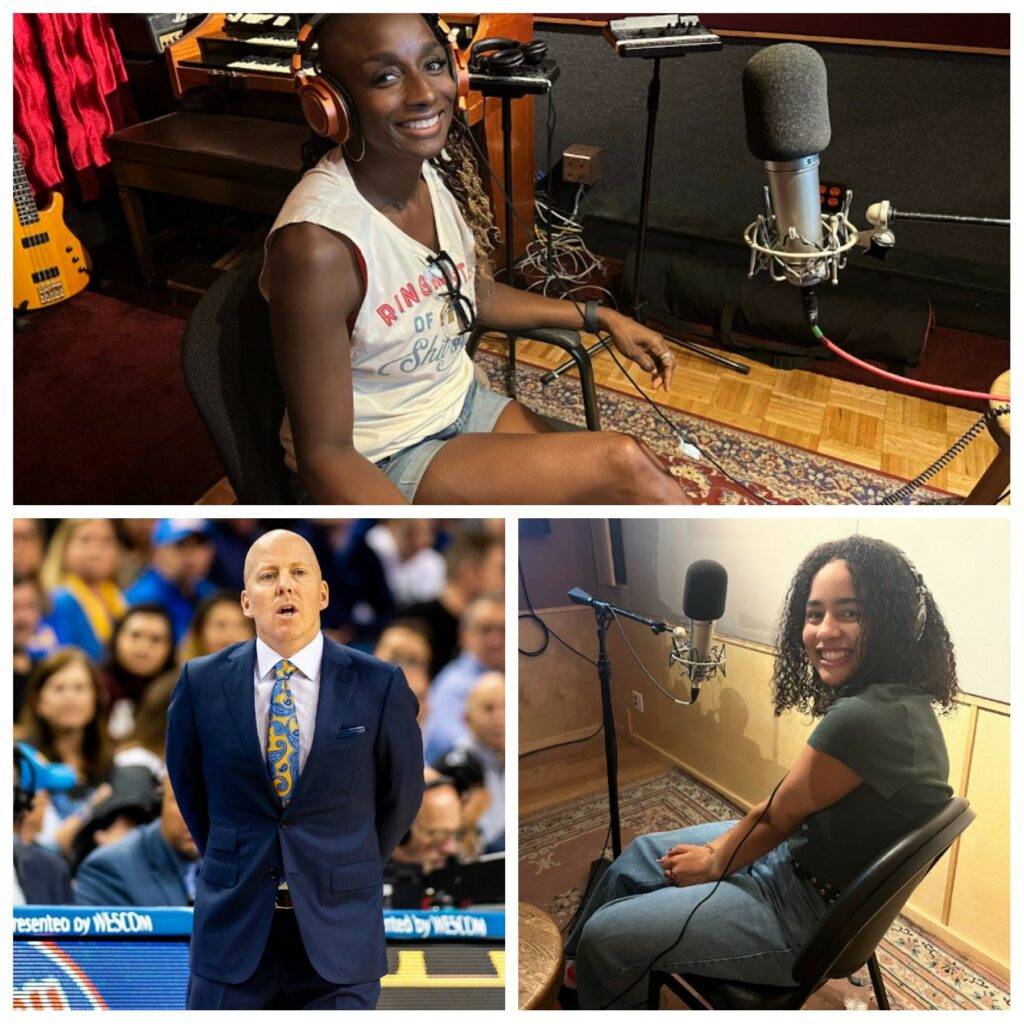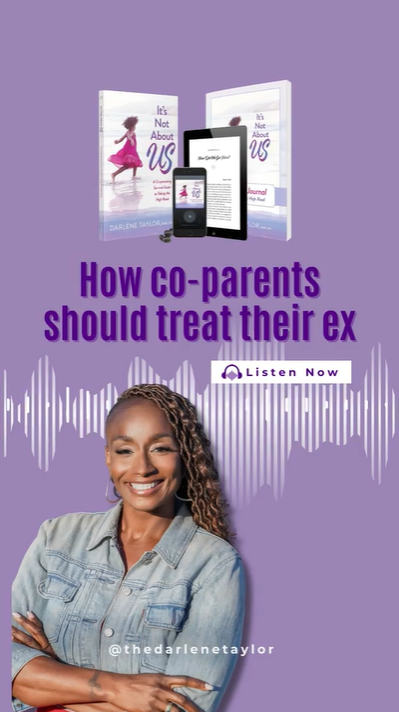The first time I realized the impact of an audiobook was years ago when I was listening to Rick Warren’s The Purpose-Driven Life. The author was recounting an emotional moment in his life when his voice cracked.
I stopped what I was doing and listened to it again, pleasantly surprised that the authentic imperfection hadn’t been edited out. Hearing the author’s emotions stirred mine, too.
Audiobooks have that power. Duncan Honeyman, the audiobook strategist for Penguin Random House, says, “Being read to is a really intimate thing: a human connection at a time when a lot of people are feeling isolated.”
That’s why we’re excited to announce the release of Darlene Taylor’s audiobook. Last year, the co-parenting coach released her co-parenting survival guide and journal, It’s Not About Us. Now, she’s ready to deepen her connection with readers – and she’s doing it through the power of audiobooks.

Want a behind-the-scenes look at the making of an audiobook? Here are the five steps Darlene followed to produce her audiobook.
But first, why audiobooks?
Audiobooks have come a long way since their first release in 1932 by the American Foundation for the Blind. Back then, the U.S. Constitution and some of Shakespeare’s works were produced on vinyl records so blind people could access them.
Today, audiobooks are the fastest-growing segment of the digital publishing industry. Their annual revenue is nearing $2 billion, most of which is dedicated to nonfiction books on smartphones. People under 45 are the most avid listeners.
In addition to accessibility, people choose nonfiction audiobooks for convenience and time efficiency. They allow people to multitask and finish more books. They also add depth and emotion to the text, enhancing the reader’s experience.
To determine whether an audiobook is right for you and your book, consider your goals, budget, and the demographics of your target audience. Your publisher can help you weigh the pros and cons.
If it feels like the right fit, you’re ready for the audiobook process.

The 5-Step Audiobook Process
Step 1: Decide on a Nonfiction Narrator.
Your first and biggest decision is deciding on your narrator. You have two choices: You can narrate your book in a studio, or you can hire a professional narrator.
For Darlene, there was no question that she wanted to narrate her audiobook – and for good reason. It’s Not About Us is a memoir, and no one knows her life, experiences, and emotions better than she does. And as a co-parenting coach, her voice is part of her brand. It sets her apart, makes her memorable, and deepens her bond with her readers.

Some authors opt for a professional narrator – also for good reason. They may not want to spend several days in a recording studio. A typical nonfiction book creates an audiobook of about 5 to 8 hours, but authors clock double that time recording their audiobooks. That’s the additional time needed to take breaks, rest your voice, and do retakes.
Authors may also prefer the capabilities of a voice actor. Narration is about bringing words to life through a great performance. It’s a show that involves voice, tone, and inflection. It takes pausing, pacing, and breathing. These nuances work together to create an engaging experience for the audience.
Alex Hyde-White, the producer at Punch Audio Studios, gives this advice on casting the right narrator:
“Don’t chase what may be a cheaper option. What may sound okay in a demo can be undone by a number of factors: not just voice but also sound consistency, environment, attention to detail, and deadlines. Audiobooks sell based on content and clarity, and you want yours to reflect the content and clarity of the writing.”
Step 2: Prepare for Your Studio Recording.
Darlene was showered with all the tips and essentials to narrate her book successfully. Before the big day, she followed a 17-point checklist for success, including these tips:
- Yawn. Morgan Freeman says it’s the secret to his narration success. It relaxes your vocal cords, preparing you for the athletic workout that is narration. Yawning before and during readings keeps your voice consistent.
- Wear soft clothing, such as sweats or leggings, that won’t rustle when you move during your recording session. Don’t wear leather, nylon, fleece, wool, or jewelry. If you’re in a cold area, wrap a scarf around your neck to keep your vocal cords warm.
- Bring chips. Chips are the secret snack of musicians, opera singers, and narrators before and between readings. The oils coat and soothe your throat, and the salt removes excess moisture from your mouth for a beautiful read!

If you’re working with a professional, special attention is given to preparing how your manuscript should be read. That’s why Randy Hames and I collaborated before recording Roger C. Igo’s Keep On Going. The narrator and I confirmed the pronunciation of every name mentioned in the corporate history of the wedding and event venue, The Bell Tower on 34th.
Your narrator will also prepare by getting to know you. John Raynar, the voice of Bill Herrington’s recent release, The Green Real Deal, says:
“I always research the author and personally connect with them to get an idea of their voice to better understand their perspective. Since Bill’s book focuses on current events, I reached out and discussed it with him. I could pick his brain and get an idea of what his voice was like. It’s their story we’re telling. As narrators, we’re just the messengers!”
Step 3: Narrate Your Nonfiction Book.
What fun it was for Darlene to record her co-parenting audiobook! She loved the experience – especially the help of an onsite director who coached her in real time.
Alex Hyde-White says a common mistake to watch out for is reading too fast.
“It’s understandable because authors know their work better than anyone. But think of the audience. If what you’re saying should matter to them, then you want them to understand and digest it. You don’t want them to have to hit the rewind button to clarify what they may have heard.”
Whether you narrate your book or hire a pro, this step isn’t complete until you’ve reviewed your audio files. Listen carefully for background noises, inaccurate pronunciations, and unclear phrases. Re-record those segments to ensure the best possible audiobook.

Darlene’s narration is flanked by her ex-husband Mick Cronin’s recording of the foreword and their daughter Sammi’s recording of the afterword.
Step 4: Distribute Your Audiobook.
Similar to your print book, your audiobook requires distribution.
Distribution means that your book is shared with the world. It’s a process of getting into readers’ hands that involves distributors, retailers, ISBNs, metadata, and pricing.
Distribution is a complex system made possible for self-published authors through new technology and platforms. The main pros are ease, wider reach, and professionalism.
Many authors distribute their books exclusively through Amazon’s audiobook platform, ACX. I encourage authors to consider also distributing through a second platform, such as Findaway Voices.
After weighing her options, Darlene is distributing her audiobook through both platforms. That means It’s Not About Us is available on Audible – plus Apple Books, Google, Chirp, Scribd, and 40 other retail and library distribution partners.
Step 5: Market Your Audiobook.
Your audiobook is an excellent opportunity to breathe life into your book marketing efforts.
For Darlene, the new product boosts her Amazon retail page. Her PR calendar is filling with speaking engagements, guest articles, and media appearances. Amazon ad campaigns are promoting her book to new readers. The other book formats are updated to feature the new audiobook. And her social media is buzzing with audiograms.
Ultimately, Darlene’s audiobook is another tool to build her brand as a life coach who specializes in co-parenting – and to impact the world around her in a positive, new way.

Conclusion
Audiobooks are gaining in popularity. An audiobook may be right for you and your book depending on your goals, budget, and target audience.
The first and biggest step is deciding whether to narrate your book or hire a narrator. The rest of the 5-step process includes author and manuscript preparation, in-studio narration, distribution, and marketing.
Like print books, your audiobook will take time and money. But there’s nothing quite like hearing your story come to life!
Congratulations on your audiobook, Darlene!
